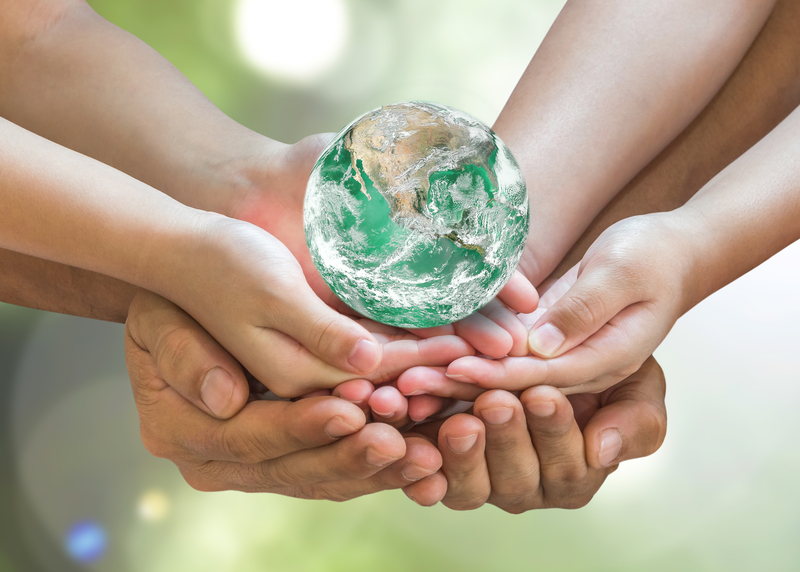How Recycling Pots and Pans Helps the Environment
Recycling is a critical component of sustainability, and one often overlooked household item that deserves attention is kitchen cookware--particularly pots and pans. These common items are sturdy, frequently replaced, and made from materials that, when disposed of improperly, can have a significant impact on the planet. Understanding how recycling pots and pans helps the environment can inspire eco-conscious decisions in every kitchen. This comprehensive guide explores the various environmental benefits, practical how-tos, and compelling reasons to make recycling your old cookware a priority.
Why Recycle Pots and Pans?
Pots and pans are usually constructed from metals such as aluminium, stainless steel, copper, and even cast iron. Some might have nonstick coatings, plastic handles, or glass lids. Each of these materials poses different recycling challenges and opportunities. Before discarding your old cookware, understanding the reasons to recycle can motivate action.
Environmental Impact of Discarded Cookware
- Landfill Overflow: Kitchen cookware doesn't break down quickly. Discarded pots and pans accumulate, contributing to landfill mountains.
- Resource Depletion: Creating new metal cookware requires significant mining and processing of raw materials, which consumes energy and depletes natural resources.
- Greenhouse Gas Emissions: The manufacturing and transportation of new cookware releases carbon dioxide and other greenhouse gases into the atmosphere:
- Mining and smelting contribute to air and water pollution.
- Disposal by incineration releases harmful fumes and pollutants.
- Hazardous Leachate: Non-recycled cookware with chemical coatings can leach toxins into soil and water sources, harming ecosystems.
Recycling pots and pans prevents these negative consequences by ensuring that valuable materials are reused, and environmental harm is minimized.

What Types of Pots and Pans Can Be Recycled?
Not every pot and pan is created equally when it comes to recycling. Here's what you need to know:
- Aluminium cookware: Highly recyclable; processing uses less energy than extracting new aluminium.
- Stainless steel pans: Also easily recycled and in demand by scrap metal recyclers.
- Copper cookware: Valuable and readily recyclable, though requiring separation from nonmetallic parts.
- Cast iron pots: Exceptionally durable and can be melted down and reused virtually infinitely.
- Nonstick and ceramic-coated items: Present more challenges due to chemical coatings and composite materials, but are still recyclable at specialty facilities.
Pro Tip: Remove plastic handles, glass lids, and screws where possible. These nonmetal components are often not accepted in metal recycling but can sometimes be separated and recycled differently.
Special Note on Nonstick Coatings
Cookware with nonstick coatings such as PTFE (Teflon) should be taken to specialized recycling centers equipped to handle and dispose of chemicals safely. Don't put them in your regular curbside recycling unless specifically allowed by your facility.
Benefits of Recycling Pots and Pans for the Environment
1. Conserving Raw Materials
Mining for metals--aluminium, copper, iron, and steel--has dramatic consequences for landscapes and ecosystems. When you recycle old pots and pans, you help reduce the demand for these raw materials by supplying manufacturers with usable, recycled metal.
- Saves Natural Resources: Less mining is necessary to meet manufacturing needs.
- Prevents Habitat Destruction: Mining operations disrupt animal and plant life, degrading continents' natural beauty and biodiversity.
- Reduces Soil and Water Pollution: Avoiding new extraction means fewer chemical runoffs into our rivers and fields.
2. Lowering Greenhouse Gas Emissions
Producing new cookware from recycled metals requires less energy than using virgin ore. For example, recycling aluminium saves up to 95% of the energy compared to producing new aluminium from bauxite ore. That's a substantial reduction in power usage, fossil fuel burning, and greenhouse gas release.
- Reduced Energy Consumption: Less electricity and fossil fuel burning needed for manufacturing processes.
- Climate Change Mitigation: Every recycled pan helps slow the accumulation of planet-warming gases.
3. Reducing Landfill Waste
Pots and pans are bulky, slow to degrade, and can take centuries to break down when dumped in landfills. Recycling diverts these long-lasting objects from overburdened landfill sites.
- Preserves Land: Landfills occupy valuable real estate that could serve communities, wildlife habitats, or recreation.
- Prevents Leachate Issues: Restricts the release of potentially toxic substances into the soil and groundwater.
4. Promoting a Circular Economy
By recycling cookware, you participate in a circular economic model where products and materials are reused and repurposed, not wasted. This reduces the need for constant manufacture of new goods and advances sustainability on a global scale.
- Encourages Responsible Manufacturing: Companies seek out and utilize recycled materials.
- Supports Green Jobs: The recycling industry creates employment opportunities in sorting, processing, and repurposing materials.
How to Recycle Old Pots and Pans
Recycling your cookware isn't as simple as tossing it into your bin. To maximize environmental benefits, follow these steps:
Step 1: Check Local Recycling Policies
Contact your local recycling center or waste authority to learn about accepted items. Some centers only process certain metals or require items to be separated. In some places, curbside collection isn't available for scrap metal, and you'll need to drop pots and pans off at a designated site.
Step 2: Prepare the Cookware
- Clean, Remove Food Residue: Rinse your items so that leftover food doesn't contaminate the recycling stream.
- Disassemble if Possible: Remove non-metal parts, such as glass lids, plastic knobs, and rubber gaskets.
- Some metal recyclers accept composite items, but you maximize recycling rates by separating parts.
- Sort by Material: If you have a mix of aluminium, steel, copper, and cast iron, group them accordingly.
Step 3: Drop-Off or Donate
- Scrap Metal Facilities: Most will accept clean pots and pans. Some may even pay for high-value metals.
- Local Programs: Many municipalities have drop-off events or facilities for household metals.
- Donation: If your cookware is in usable condition, donate to thrift stores, shelters, or community kitchens to extend its life before recycling.
Step 4: Specialty Recycling for Nonstick/Coated Cookware
If your pans are nonstick or ceramic-coated, find a facility that can safely manage chemical coatings. NEVER burn coated pans for scrap metal, as this releases toxic fumes.
Step 5: Avoid Landfill Disposals
As a last resort, when recycling or donation isn't possible, check for safe landfill procedures. Never burn, crush, or dump pans in the wild. They may pose environmental hazards or legal consequences.
Creative Ways to Repurpose Old Pots and Pans
Before heading to the recycling center, consider whether you can repurpose your old cookware. Upcycling is a form of recycling that gives objects a second life.
- Planters: Turn large pots into rustic garden planters for flowers or herbs.
- Birdbaths and Feeders: Old pans make charming outdoor accessories for wildlife.
- Art Projects: Paint and mount old cookware into decorative wall art for kitchens or patios.
- Storage Containers: Deep pans can be converted into organizers for tools, office supplies, or toys.
Each upcycled pot or pan means one less object in the landfill and a creative way to add charm to your home or community spaces!
What Happens to Cookware After It's Recycled?
Once recycling facilities receive your old cookware, the process generally follows these stages:
- Sorting: Metals are separated by type (aluminium, steel, copper) to ensure efficient recycling.
- Cleaning: Any remaining nonmetal parts, food residue, or coatings are removed (typically mechanically or chemically).
- Shredding and Melting: Items are crushed and then melted at high temperatures.
- Purifying and Solidifying: The molten metal is purified and poured into ingots or sheets for manufacturing new products.
The recycled material can be turned into new cookware, automobile parts, building materials, or consumer goods--the cycle of reuse continues, reducing the need for virgin resources and supporting a healthy planet.

Challenges and Solutions for Recycling Cookware
While the environmental benefits of recycling pots and pans are clear, some obstacles remain:
- Composite Materials: Items with multiple layers or coatings can be costly to process.
- Lack of Consumer Awareness: Many people aren't informed that cookware can be recycled, leading to needless landfill disposal.
- Inadequate Local Facilities: Not all communities have robust scrap metal recycling programs.
Solutions:
- Education: Share information via social media, schools, and community events on recycling pots and pans.
- Advocacy: Support expansion of municipal recycling services and retailer take-back programs.
- Product Design: Encourage manufacturers to develop single-material or easily disassembled cookware for easier recycling.
Conclusion: Recycling Pots and Pans for a Greener Future
Recycling pots and pans helps the environment in numerous, meaningful ways--from conserving natural resources and reducing energy consumption to minimizing landfill waste and promoting a sustainable, circular economy. Every household plays a crucial role in this process.
As consumers, we can make a difference by choosing to recycle or upcycle old cookware, supporting green initiatives, and spreading awareness about the importance of keeping these durable items out of the landfill. Next time you replace a pot or pan, remember: a small action in your kitchen can have a big impact on our planet's health!
Frequently Asked Questions about Recycling Cookware
- Q: Can I put old pots and pans in my curbside recycling?
A: Typically, no. Most curbside programs don't accept scrap metal. Check with your local recycling center for proper drop-off options. - Q: What should I do with nonstick-coated pans?
A: Take them to a specialty facility that handles chemical coatings, or contact the manufacturer for take-back instructions. - Q: Are there eco-friendly alternatives to nonstick pans?
A: Yes! Consider stainless steel, carbon steel, or cast iron for greener options.
For a sustainable, cleaner, and greener tomorrow, let's make kitchen recycling a regular part of our daily environmental stewardship.
